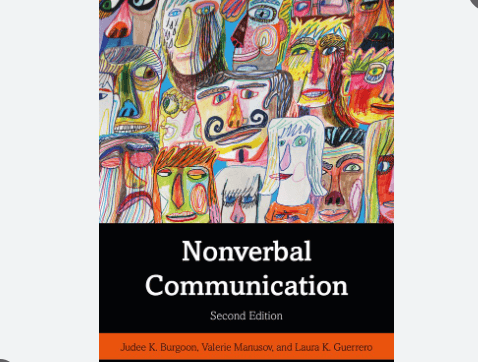Tussling Within: Understanding Intrapersonal Conflict

- Credit | Resilia
- In life, we often encounter conflict. Whether it's with others or within ourselves, navigating these challenges can be complex and demanding. Intrapersonal conflict, in particular, is a phenomenon that affects individuals internally, manifesting as a struggle within one's own mind and emotions. Unlike interpersonal conflict, which involves clashes between individuals, intrapersonal conflict is deeply personal and can significantly impact one's well-being and decision-making processes.
What is Intrapersonal Conflict?
Intrapersonal conflict refers to the internal struggle that arises within an individual when faced with conflicting goals, beliefs, values, or desires, leaving them feeling pulled in opposing directions. This conflict can arise in various aspects of life, including personal relationships, career choices, moral dilemmas, and self-perception.
Delving Deeper: Types of Intrapersonal Conflict
Ever feel like you're at war with yourself? That inner voice nagging you one way while another part of you screams the opposite? That's intrapersonal conflict in action.
Unlike interpersonal conflictOpens in new window, the usual squabbles we have with other people, this one's all inside your head. It's basically your brain hosting a wrestling match between different desires, values, or just plain tough choices. Intriguingly, there are three main ways this internal friction can show up. Let's dive into them and see if you recognize any of these battles happening inside your own mind!
Approach-Approach Conflict: The Allure of Two Desirable Options
Imagine a delicious dessert menu with a tempting chocolate brownie sundae and a decadent strawberry cheesecake. You crave both, but you can only choose one. This is an approach-approach conflict, where you're drawn to two equally desirable options, each with positive outcomes.
Approach-Avoidance Conflict: The Push and Pull of a Single Goal
Sometimes, a single goal can be both attractive and repulsive. Perhaps you're offered a fantastic job in a location you dislike. The opportunity (approach) is exciting, but the downsides of the location (avoidance) create a dilemma. Similarly, you might crave dessert while on a diet. You're drawn to the treat (approach) but repelled by the potential diet sabotage (avoidance).
Avoidance-Avoidance Conflict: Stuck Between Two Unpleasant Choices
Imagine being invited to your boss's house for dinner. You're on a strict diet, and dessert (strawberry cheesecake!) is served. Refusing might seem rude (avoidance), but indulging breaks your diet (another avoidance). This is an avoidance-avoidance conflict, where both options have negative consequences.
Real-Life Conflicts: A Spectrum of Complexity
Intrapersonal conflicts are rarely as clear-cut as our dessert examples. We often face multiple, intertwined conflicts, leading to indecisiveness. Additionally, conflicts can become layered, like experiencing a workplace ethical dilemma that creates both interpersonal tension with a colleague and internal struggle about how to handle it.
Common Causes of Intrapersonal Conflict
- Competing Values: We all hold different values dear to us. Sometimes, these values can contradict each other, leading to internal conflict. For instance, you might value honesty but also want to protect a friend's feelings.
- Role Conflict: Juggling multiple roles in life, like being a student, employee, and caregiver, can create internal friction. You might feel pulled in different directions, struggling to meet the demands of each role.
- Decision-Making Dilemmas: Difficult choices often lead to intrapersonal conflict. You might weigh the pros and cons of a job offer, torn between career advancement and staying close to loved ones.
- Unmet Needs: When our fundamental needs aren't being met, it can create internal turmoil. This could be a need for security, belonging, or self-expression.
The Impact of Intrapersonal Conflict
While conflict can be uncomfortable, it's not necessarily a bad thing. In fact, intrapersonal conflict can be a catalyst for growth. It can push us to challenge our assumptions, explore different perspectives, and ultimately make well-considered decisions. However, unresolved intrapersonal conflict can also have negative consequences:
- Stress and Anxiety: The constant internal struggle can take a toll on your mental well-being, leading to stress and anxiety.
- Low Self-Esteem: Feeling like you're constantly failing to live up to your own expectations can erode your self-esteem.
- Indecision and Procrastination: The fear of making the wrong choice can lead to indecisiveness and procrastination.
Strategies for Managing Intrapersonal Conflict
The good news is that intrapersonal conflict doesn't have to control you. Here are some strategies to help you navigate these internal battles:
- Self-awareness: The first step is to identify the source of your conflict. Take time to reflect on your values, goals, and what's causing the internal friction.
- Prioritization: If you're facing competing goals, identify what truly matters most to you in the long run. This can help you make clear decisions.
- Compromise: Sometimes, the solution lies in finding a middle ground. Can you find a way to satisfy both your needs in a particular situation?
- Open communication: Talk to a trusted friend, therapist, or counselor. Talking things through can provide valuable perspective and support.
- Positive self-talk: Challenge negative self-beliefs and replace them with affirmations that boost your confidence.
Intrapersonal conflict is a normal part of life. By understanding the causes and impacts of this internal struggle, you can develop healthy coping mechanisms and emerge from these challenges with greater self-awareness and a stronger sense of self. Remember, the battles you fight within yourself can shape you into the person you are meant to be.
























